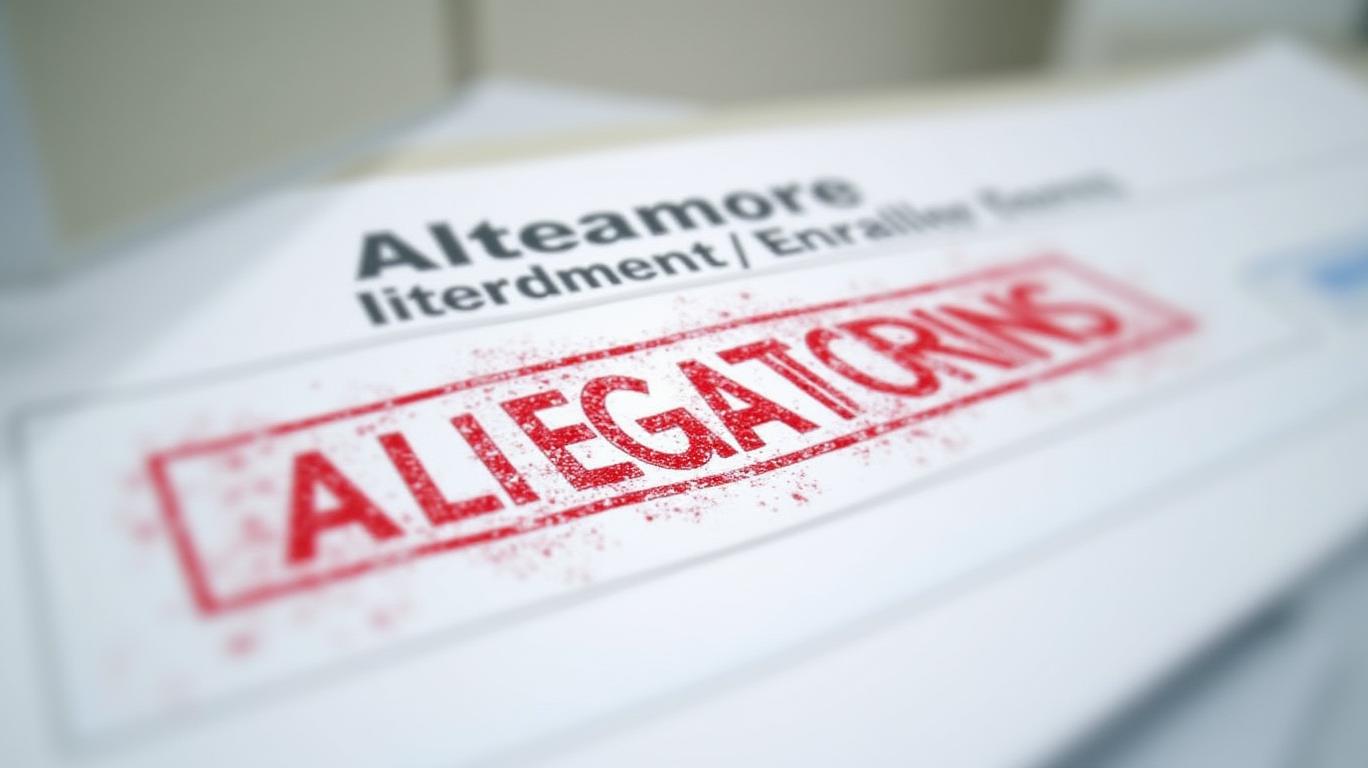Antitrust Crossroads: How DOJ Scrutiny is Redefining Healthcare M&A and Amedisys' Risky Gamble

The healthcare M&A landscape is undergoing a seismic shift, and Amedisys (NYSE: AMED) finds itself at the epicenter. The Department of Justice’s relentless antitrust scrutiny of its $3.3 billion merger with UnitedHealth Group’s Optum unit has exposed vulnerabilities in consolidation strategies that could ripple across the industry. For investors, this is a pivotal moment: the DOJ’s rejection of proposed remedies—and its insistence on deeper divestitures—signals that antitrust enforcement is no longer a speed bump but a roadblock for deals lacking antitrust resilience. Here’s why Amedisys’ regulatory battle matters, and what it means for your portfolio.
The Regulatory Crossroads: Amedisys’ Merger in Jeopardy
The DOJ’s November 2024 lawsuit to block the Amedisys-UnitedHealth merger has been a masterclass in regulatory overreach. The agency argues the deal would give Optum control of over 30% of home health and hospice markets in eight states, eroding competition and driving up costs. Even after Amedisys agreed to divest assets to Pennant Group and BrightSpring Health Services—a move designed to appease regulators—the DOJ remained unconvinced. Why? The divestitures, while substantial, still leave Optum in a dominant position in key regions, and the buyers’ existing scale (Pennant’s $11 billion valuation, BrightSpring’s national footprint) may not sufficiently address market concentration.
The stock’s volatility mirrors this uncertainty. Shares have swung between $93 and $100 since the merger’s announcement, reflecting investor anxiety over the $325 million breakup fee and the December 31, 2025, deadline. Amedisys’ Q1 2025 earnings—while profitable—were overshadowed by merger-related costs totaling $16.8 million, a stark reminder of the financial stakes.
Ask Aime: Can Amedisys' merger halt be a warning for investors?
Why the DOJ’s “No” Matters for Healthcare M&A
The Amedisys case isn’t an outlier—it’s a blueprint for how antitrust scrutiny is reshaping industry consolidation. The DOJ’s focus on geographic market dominance (not just national share) and its demand for divestitures that return competition to pre-merger levels sets a dangerous precedent:
- Higher Bar for Remedies: The VitalCaring fiasco (a terminated deal due to financial instability) shows regulators won’t accept superficial fixes. Buyers must now prove they can sustainably operate acquired assets—a hurdle that eliminates weaker competitors.
- State Attorneys General as Partners: Maryland, New York, and others joined the DOJ’s suit, highlighting a coordinated push to block mergers that threaten local markets. This multi-state approach could make future deals harder to defend.
- Vertical Integration Under Fire: UnitedHealth’s prior acquisition of LHC Group in 2023—and its bid to add Amedisys—has drawn scrutiny for creating a vertically integrated giant (insurance + care delivery). This signals risk for insurers seeking to control care networks.
Is Amedisys Stock a Contrarian Play or a Warning Sign?
The stock’s dip to $95 in May 2025 presents a contrarian opportunity—but only for those willing to bet on a last-minute settlement. Here’s the calculus:
- Bull Case: A mediated deal post-August 2025 mediation could see Amedisys retain 90% of its value, with divestitures limited to 128 facilities. UnitedHealth’s financial muscle might secure a scaled-back remedy, unlocking the $3.3 billion deal’s synergies.
- Bear Case: The DOJ’s insistence on further concessions—such as selling assets in states like Texas or Florida—could force Amedisys to abandon the merger. A failure would trigger the $325 million penalty, slash earnings, and damage the company’s strategic credibility.
Investors must weigh this against broader sector risks. The home health market, once a consolidation goldmine, now faces a “too big to merge” reality. Firms like Pennant and BrightSpring—buying Amedisys’ divested assets—are the beneficiaries of this regulatory shift, as their decentralized models avoid triggering antitrust red flags.
The Antitrust-Resilient Playbook for Investors
The Amedisys saga underscores a critical lesson: investors must prioritize companies with antitrust-resilient growth models. This means:
- Diversified Market Exposure: Avoid firms with over 15% share in any region. Amedisys’ reliance on Southern states (where it competes directly with UnitedHealth) made it a target.
- Horizontal vs. Vertical Deals: Horizontal mergers (e.g., two home health companies combining) face less scrutiny than vertical ones. Look for partnerships that don’t blur lines between care delivery and payment.
- Small-Scale Tuck-Ins: Follow the BrightSpring/Pennant model: acquiring small, non-overlapping assets to grow without triggering market dominance thresholds.
Final Verdict: Proceed with Caution, but Act
Amedisys’ stock is a high-risk, high-reward bet. If the merger closes by year-end, shares could surge to $110+ (the DOJ’s “no” has already priced in much of the risk). However, investors must ask: Is the potential upside worth the regulatory gamble?
For now, the safer play is to focus on antitrust-proof companies like BrightSpring Health Services (privately held but a beneficiary of the Amedisys deal) or Enhabit (a public competitor with a decentralized footprint). If you’re ready to bet on Amedisys, use the $93–$95 range as an entry point—but keep a close eye on the DOJ’s August mediation outcome. The antitrust era is here, and only the prepared will thrive.



_d6548da11749819995064.jpeg)







